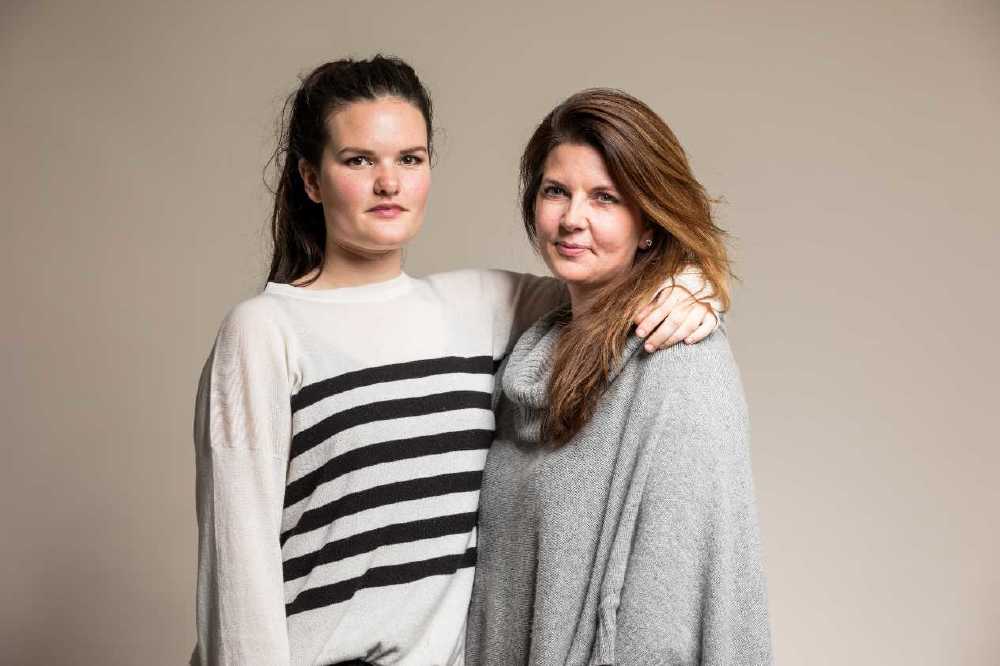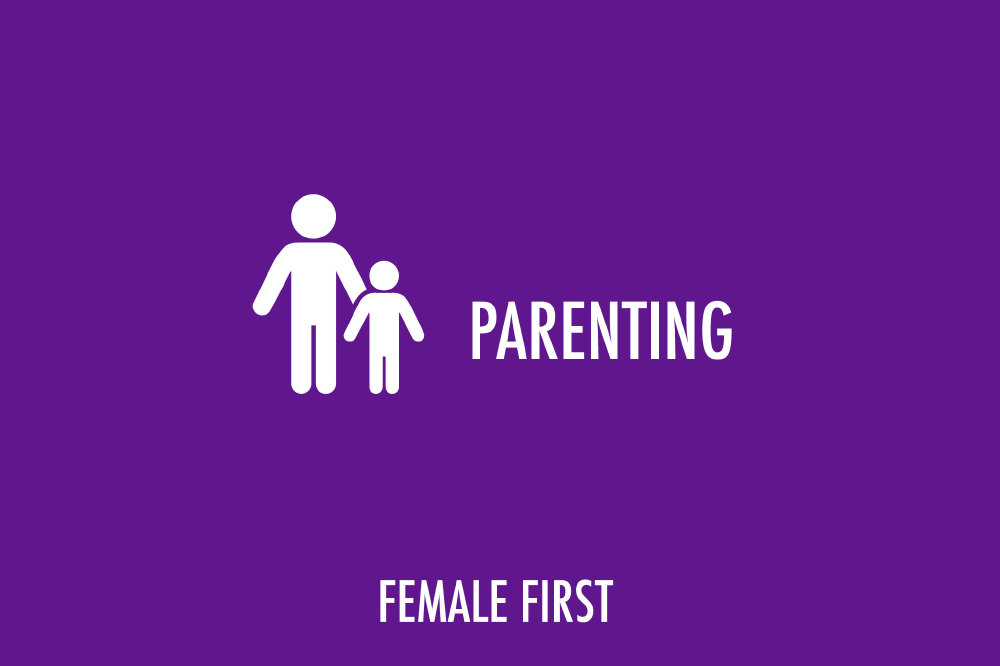Esme founded the company in 2004 after putting her six children through nappies. Before meeting her husband, as a single mother, she resorted to terry flats and safety pins to ensure she never ran out of nappies – and never looked back! She was determined to make a cloth nappy brand that was high quality but affordable. Now she runs LittleLamb with her daughter Alannah, so we caught up with them both to discuss the impact of disposable nappies on the environment and what we can do as consumers to help address the problem.

Alannah and Esme, founders of LittleLamb
Why do you think people continue to use disposable nappies when it's obvious how much they continue to fill up our landfill and ultimately help to destroy the planet?
Alannah: There are a lot of different reasons; awareness is a big factor. A lot of people still don’t realise that using reusable nappies is even an option and don’t know how harmful disposable nappies are. We’re so used to seeing disposable nappies on supermarket shelves and in adverts that parents assume this is the norm, which is why awareness campaigns like Reusable Nappy Week are so important to help educate people around the different options available and help them make informed choices.
Similarly, convenience. We know that parents are already incredibly busy and have a lot going on in their daily lives, so washing nappies can appear like an extra thing being added to their to do lists. However, it’s really just a case of perception and we try to show parents that using reusable nappies can easily slot into daily routines. Many parents don’t realise the cost saving benefits of reusable nappies either – switching from disposables could save them up to £750 per child.
Esme, you used terry cloth nappies for your children, so what made you want to develop something a little different to the traditional method?
Esme: Terry nappies are great and still have a place today as an affordable nappy option, but folding and pinning them can be quite overwhelming when you’re dealing with a wriggly baby (some people refer to it as nappy origami!). I wanted to create nappies that are easier to use while remaining functional, reliable, and stylish. All my children were heavy wetters, so creating high absorbent nappies was very important to me - my first prototypes were made out of our bath towels and my husband wasn’t very pleased!
How did you decide on your fabrics and designs?
Esme: The main factors when selecting fabric are getting the balance of sustainability and absorbency right. We only used cotton when we first launched, inspired by my absorbent bath towels, as it is so durable, but over time we discovered and experimented with more materials. We began using bamboo viscose as it is more sustainable to produce while also remaining absorbent (which is very important when dealing with liquids!). Since 2021 all our new products that use polyester are made with recycled post-consumer plastic, so we’re really pleased to be able to incorporate even more sustainable materials into our range.
I create all our prints and designs in-house. As an avid lover of all things craft, I began developing all the artwork myself using my iPad and it’s the best part of my job! Alannah will give me a brief, such as ‘Under the Sea’, and I’ll go off into my imagination and come back with ideas of creatures and elements that we then work into a pattern together. I always say I am a “frustrated artist-turned-entrepreneur” - before I had my first son, Josh, I was in art college, but I dropped out when I had him as fine art sadly wasn’t going to pay my bills.
Why did the initial idea for nappies then turn into expanding the range to other reusable products too?
Alannah: Our product development has been inspired entirely by our customers. We are very lucky to have such a close and productive relationship with them, mostly facilitated by our amazing customer service team (who have worked with us for the last 20 years). After the success of our reusable nappies, we saw demand for other products that are a vital part of parenthood – like the breast pads and cloth sanitary pads.
Please tell us how you and your daughter manage business and family time effectively.
Esme: We love working together and we are both passionate about building LittleLamb, but that doesn’t mean it isn’t without its challenges. If we’ve had a busy week and see each other on the weekend, we’ll say “no work talk”, but we soon realised that our best ideas have come from our downtime together. We also have separate roles; Alannah works on the marketing, brand strategy, and growth, while I work on the creative artwork and finances. We’ve been working together for nearly seven years now and we couldn’t imagine working any other way. My husband, Nick, also works with us, and my three younger daughters all chip in when needed. We are a very tight-knit family and my kids have grown up watching Nick and I balancing work and family life.
What impact does this small change make to the amount of waste that having a new baby creates?
Alannah: On average, one baby will need 6,500 nappy changes from birth to potty - this means 6,500 dirty nappies going into landfill if disposable nappies are used. Using cloth nappies, you can save money and really reduce your waste.
One of our favourite customer testimonials is from a lady who purchased a set of 20 cotton nappies for her baby, used them on her first and second child, then gave them to her sister who used them on her three children, and then sold them online! Those 20 initial nappies saved nearly five tonnes of disposable nappy waste from landfill and that kind of circular economy makes us so proud.
Do you think that people associate reusable with expensive?
Esme: Sadly, yes, but that unfortunately comes from customers seeing the initial one-off cost rather than the long-term saving. Cloth nappies are actually one of the only eco-friendly changes that saves people money in the long run, especially if they have more than one child using the nappies. I’ve really noticed the cost increase of sustainable products over the years. When I had my first child in 1990, using cloth nappies was a cheap and easy solution, but by the time I had my fourth in 1997 I noticed more brands popping up In the reusable nappy space and using terms like “eco-friendly” – so costs went up too. One of our founding principles was making reusable nappies a cheaper option and keeping our brand affordable, while still maintaining our quality. We believe reusable nappies should be affordable for everyone.
Other than the environmental impact, what are the other advantages of swapping out disposable nappies for reusable ones?
Alannah: As well as saving money, a lot of people choose reusable nappies as it means less chemicals on their child’s skin. Cloth nappies work by physics - if you need more absorbency, you add more layers, whereas disposable nappies are chemistry based.
What can existing nappy brands do to help address the problem?
Alannah: We’d love to see more of the bigger brands embracing reusables and normalising cloth nappies so they’re not seen as an “alternative” option (there was a time when they were the only option for many!)
What is next for you and the company?
Esme: We have a lot coming up in the pipeline this year. We’ll soon be launching a new design collection and working with a charity partner to donate profits to from our new range. As well as supporting parents and the environment we’re so pleased to be able to support others with our work too. Watch this space!...
MORE: Seven reasons to invest in period underwear during and after pregnancy

Tagged in Babies

